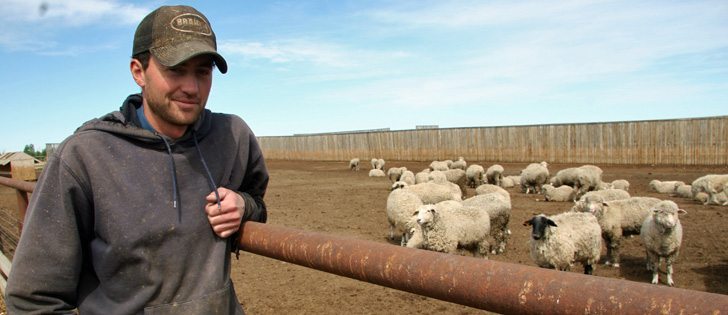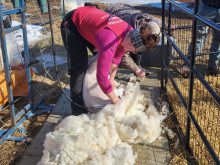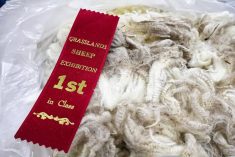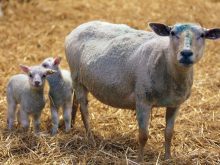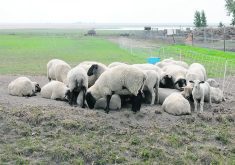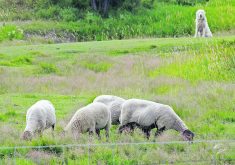ACME, Alberta. — Ryan Albers has worked around sheep his whole life. He got his first lamb when he was six years old.
But his years of experience would not be enough to manage his 15,000 head feedlot near Acme, Alta., were it not for modern technology.
Albers bought the feedlot almost three years ago from the Price family, which owns Sunterra Farms.
The lot was well designed and equipped with an electronic identification facility. He has since upgraded the operation.
Albers and his father, Roger, who operates a feedlot near Stony Plain, buy lambs and offer custom feeding services. The computerized identification system tells them everything they need to know about the individual animals.
Read Also

Feds propose overhaul of chronic wasting disease control program
Chronic Wasting disease control program getting updated by Canadian Food Inspection Agency with feedback encouraged from producers.
Processors send the Albers grading sheets to indicate how well each lamb graded, its back fat depth and weight. With traceback capabilities, the Albers can find the best lambs and continue to buy animals from the producers who provide what they seek.
“We can get feedback to the custom guys on what kind of job we are doing,” he said.
Albers only has one full-time and one part-time hired hand to work with the lambs, as well as manage 3,000 goats and a cull ewe grazing program so the labour savings the technology provide are vital.
Every lamb wears a yellow ear tag with an electronic chip that carries a unique number. A wand or panel reader on the right side of the handling chute activates the chip and information can be attached to the number.
They can monitor weight gains and record medications and the computer will calculate how much longer the lamb should be on feed before it should be shipped to market. The computer can also calculate medication doses according to current weights and advise on withdrawal periods.
Albers does not include breed information, but wants to add it in the future.
Albers buys lambs that weigh in at about 80 pounds from across Western Canada. They are on feed for about 90 days and go to market at around 120 lb.
In addition, he imports lambs from the United States, which helps him to compare performance. This year, he brought in 4,000 Rambouillet and Targhee.
So far, the weight gains and grades in the imports have often been higher than domestic lambs.
While trying to come up with the management system, Albers learned there was no computer software available specifically for sheep so it had to be designed. Considerable work was needed to develop a way that would enable computers, readers and chips to talk to one another.
A feedlot was a unique situation and special software was needed, said Sue Hosforth of Alberta Agriculture.
“When we started there were no software programs that he could use.”
A Camrose company was contracted to write and set up the special software.
“The software is the brain of all these systems,” she said.
They tested various systems and rated them on www.sheepcentral.ca, which was built exclusively for the lamb industry. A national livestock traceability program is still in the works.
As the program matured, feeders, lamb buyers and processors could see the benefits.
If the packer condemned lambs, for example, buyers and feeders lost the money rather than the farm of origin.
“That gave the sort of mental shift we need to make traceability work,” she said.
“If they are responsible for the quality of lamb that is going to market then it is not their responsibility alone. The whole lamb supply chain is responsible for quality,” she said.
They are also working to improve flock business management using information collected from birth to slaughter.


